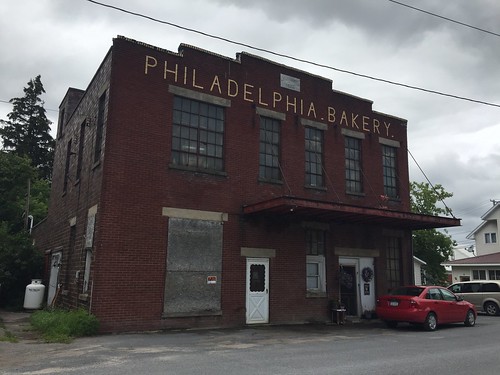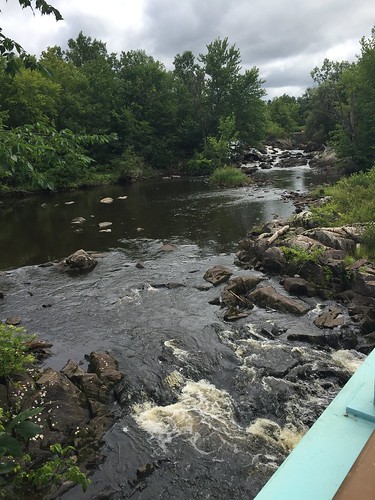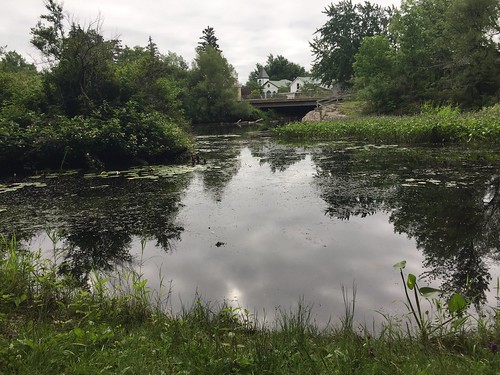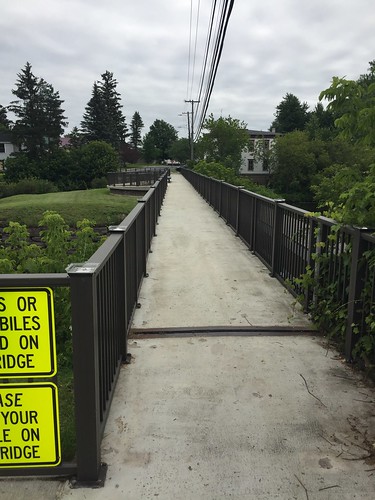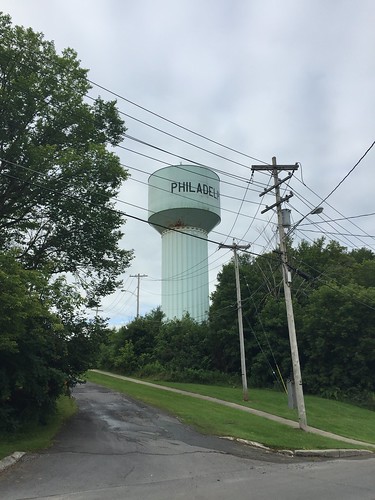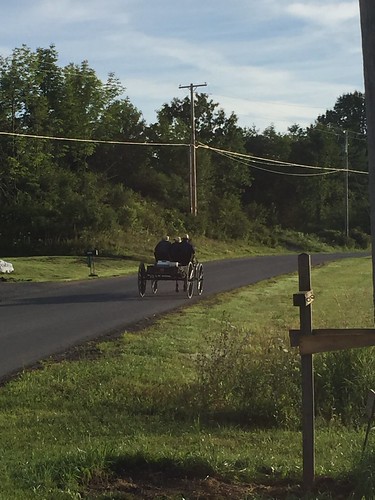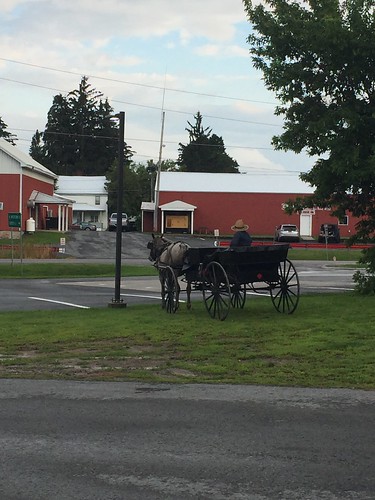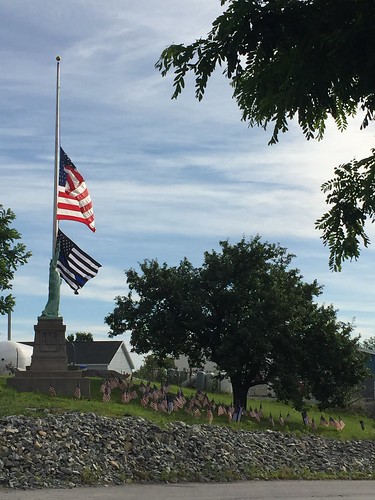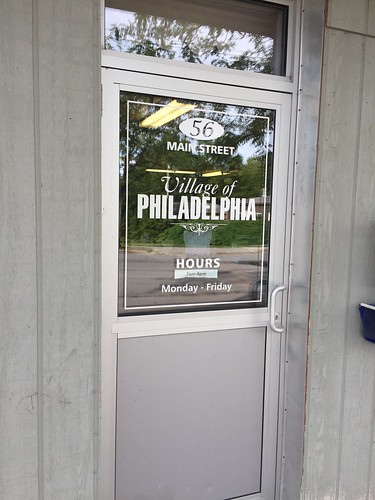My staff sometimes claims that I don't handle change well. This is partially true, but also partially a gross generalization. I eventually handle change, but my immediate first response is usually irritation and confusion. As such, I feel slightly guilty for the couple hours that my friend Chris spent with me on Saturday, touring the SUNY Cortland campus and listening to me go, "This isn't right. This isn't right either. I don't like any of this."
I actually did like a lot of it, but I was disoriented by the way the campus is somehow still the same, but also entirely different.
Cortland looms large in my life, and also in my subconscious. On a regular basis, I still have dreams set on campus, and I have a lot of memories there. Until I moved to Albany, and then Knoxville, Cortland was the city that I had lived in for the longest amount of time in my life, and like any place that you live a long time, I have a lot of memories both positive and negative tied up there. I'm assuming the positive outweigh the negative, as I still wanted to visit Cortland and see it again.
Albany, on the other hand, can die in a fire.
After all the people there that I still like have time to get out.
Back to Cortland, our first sign of trouble came when I called Chris to ask where to park:
"Where on campus are you now?"
"At the end of Bishop and whatever weird building is attached to the end of Bishop."
"Oh, God. OK. Go to Corey Union, and there's a little parking lot on the side."
"The little side lot is still there? Next to Van Hoesen?"
"Yes. Park there."
Corey Union still looks mostly the same, except that they redid the front steps:

which you can't see in that picture since I took it from the side lot. Van Hoesen, on the other hand...
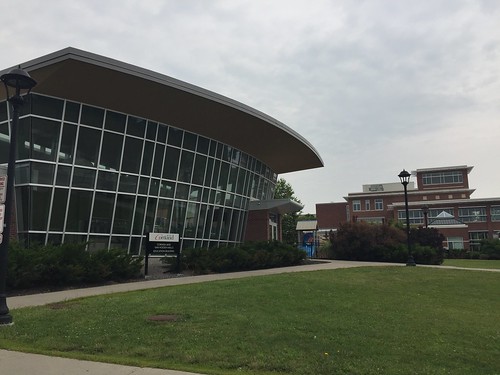
That looks nothing like Van Hoesen. The inside still looks the same, until you go upstairs and you find out that Cornish Hall is just a hallway in the new education building. Seriously. The whole building is gone except for one string of offices that are still labeled and numbered as Cornish Hall.
The rest of the tour of campus was very similar. Some things haven't changed at all on the outside:

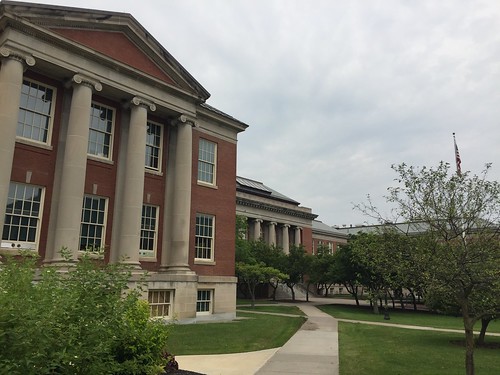
and some are unrecognizable:

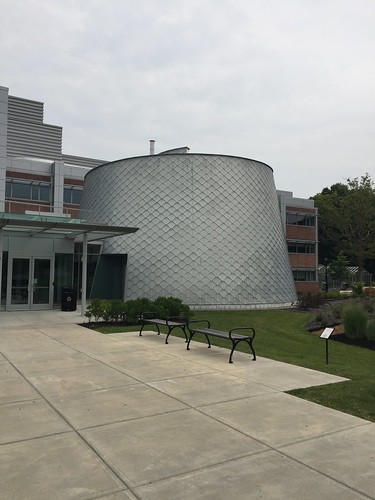
That's Bowers, and the planetarium. I'm not 100% sure, because I was only in it a few times, but I feel like the planetarium isn't even in the same place.
Campus looks good, though. When I came the architecture could be dated to a very specific period, mostly, and it looks like they've moved away from some of that. According to Chris, almost every building I pointed at has been redone on the inside, even if the outside only looked minorly tweaked, except maybe for Moffett:
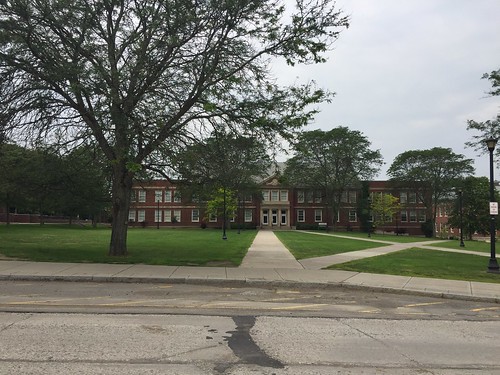
where, I explained to Chris, "Once I was going in through the side door to go to Brit Lit and the steps were icy and I slipped on them and tore the knee out of my jeans and cut my knee open, too."
I tried to keep most of the stories to that level of reminiscing because Chris brought his son, CJ, with us:

(there they are in front of Sperry; my first year of college there was a girl who lived in my building who said she was part of the family the building was named after, but told us it was "not really a big deal") so it seemed like maybe I should keep the stories a little clean, rather than pointing at Bowers and explaining how many people I knew who had sex in the VAX lab or the lockable ADA-accommodated bathroom on the first floor (Including me, in the bathroom, one time on a dare senior year. I'm not especially proud of this memory, but at the time I was.) or places where people I know vomited or peed.
See? I can be good with kids.
Many of the buildings have only changed a little on the outside, like Dowd:
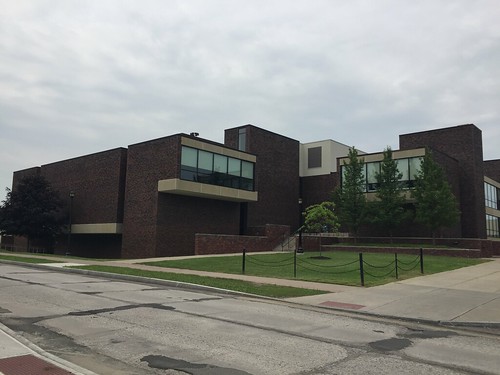
where I had theatre classes and also spent many evenings senior year sitting and working on student teaching homework and writing in my journal about how much I (thought I) loved Jackass (turns out I was wrong) in the ceramics lab while Jackass worked on his class projects,
Miller:
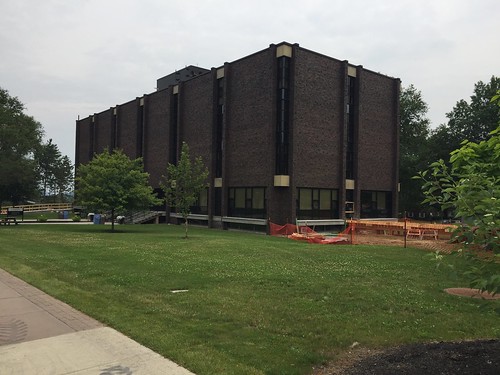
which was taken over by students during my junior year to protest a lack of diversity programming on campus; an annual "Diversity Day" was held a few weeks later that included suspending classes for the day, and despite being "annual" was never held again,
Lusk:
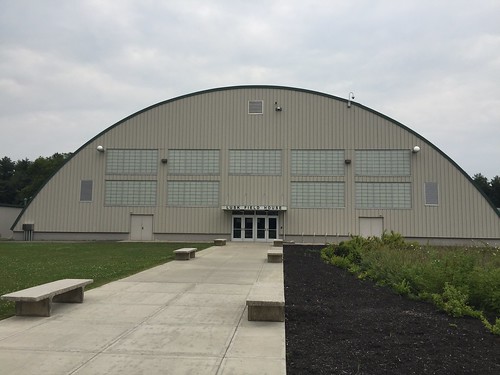
which my friend Angie got in trouble for climbing (the roof is now metal and unclimbable), or Smith and Casey:
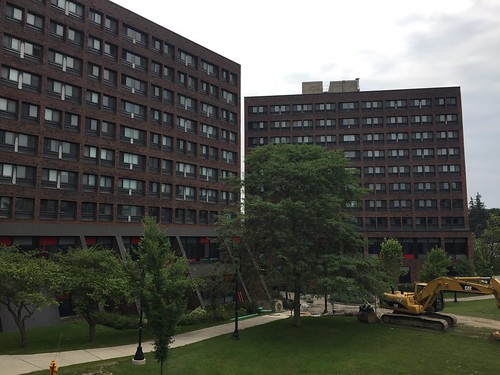
where I have way too many memories to list but on the lawn of which my friend Leslie once tried to explain to me that it's not ok to bring a book to a cookout in case you get bored with the people there. In the ensuing years I have only partially heeded this advice.
Some things are entirely new, like the sculpture of the dying rhino:

which I would have loved as a student; the stadium:
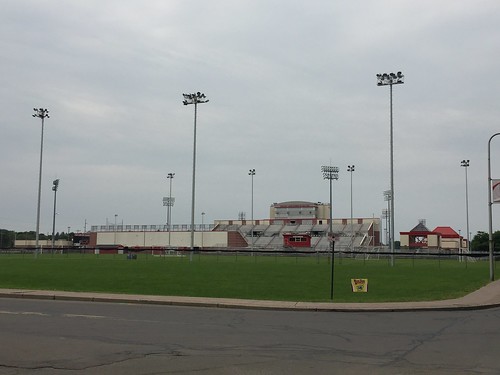
or the brand new recreation facilities:

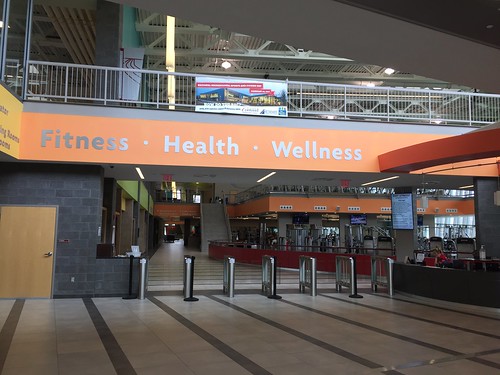

Also, Whitaker is, randomly enough, the police station now:
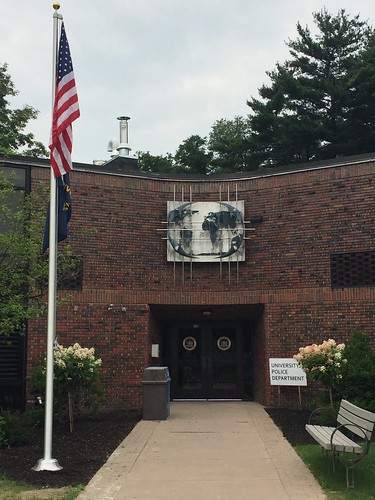
The real surprises came when we toured the residence halls, though. Bishop, as I mentioned, has a building attached to it now, Glass Tower Hall. Hayes, the last hall where I was a hall director before leaving, also has a building attached, Dragon Hall:
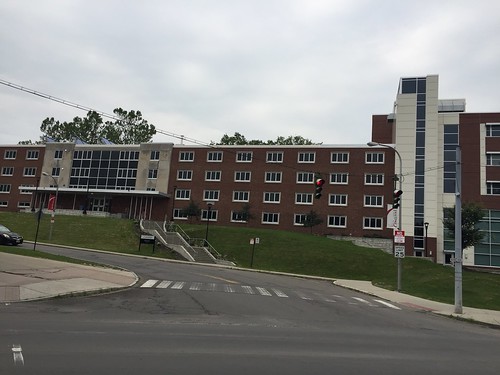
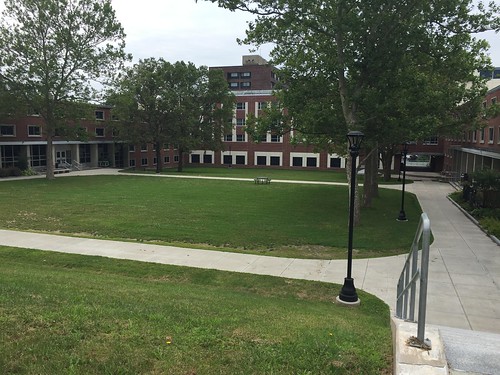
They also redid the front steps, where are now longer, but less steep.
They also changed my beloved Alger Hall, where I first lived as a student, first worked as a student staff member, and first worked as a hall director. While the call box by the front door looks exactly the same:

the outside looks slightly different:


and the inside looks very different:
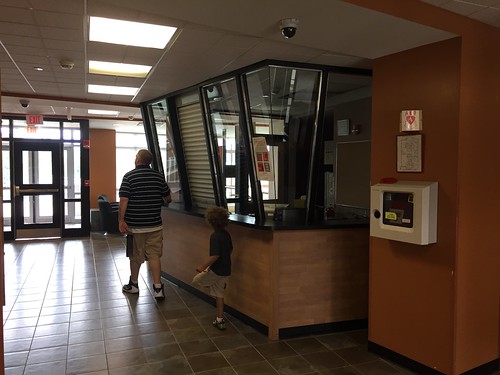
The office is in the middle of the lobby now, and where the staff office and my office used to be there's now a two story lounge:
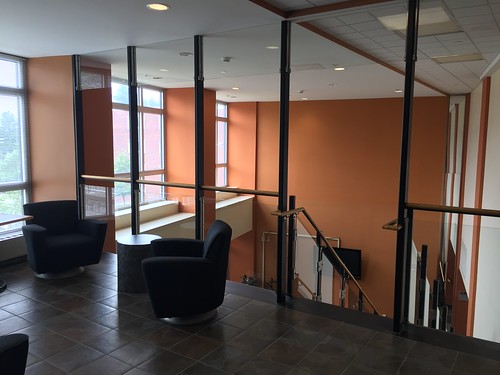
That last window on the left was my office window.
Upstairs, my room looked exactly the same on the inside:

except that it used to be blue. During the renovation, though, all of the doors got renumbered, so the room number isn't the same:
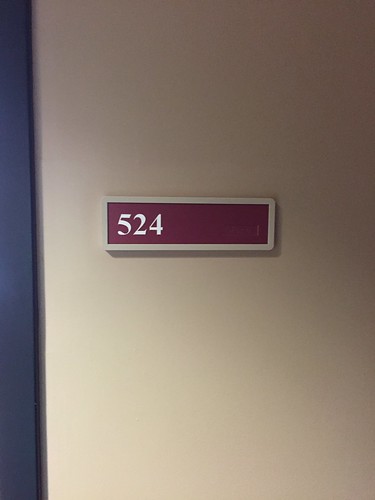
Todd and I did not live in 524, but I know it was the right room based on where the window was on the hallway. My friend Alena's room, at the opposite end of the hall, isn't even there anymore, because that end of the hallway is a big multi-bedroomed suite now.
I'm very thankful to Chris for providing a guided tour, with narration, so that I wasn't just walking around for two hours going, "What the hell is this?" Campus seems like a very exciting place now, and I'm sure the students enjoy all of the new upgrades and all of the memories of their own that they're attached to buildings, trees, sculptures, bus stops, the weird parking lot in the back of the cemetery that wasn't there when I was a student, and wherever it is that they go to all you can eat (rebranded as "All You Care to Eat" sometime during my years as a student, as some students took the first name as a challenge) brunch on the weekend now that Winchell is no longer a dining hall. It kind of makes me want to start sending Cortland some money.
But only Cortland.
Albany can fend for itself.
